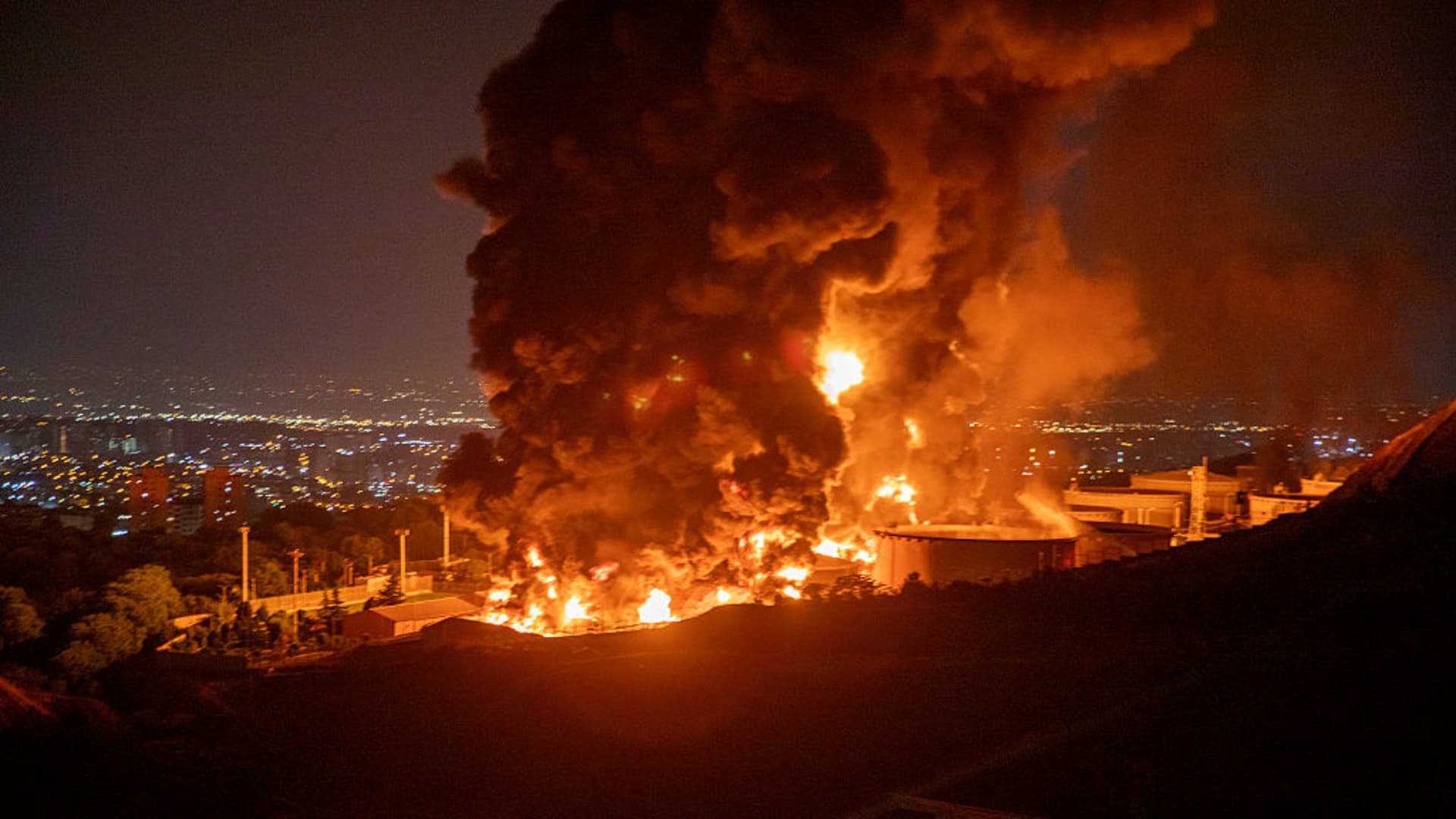The oil market is assuming a bearish tilt after the Iran-Israel conflict ended in a ceasefire this week, with President Donald Trump hinting he could loosen sanctions against the Islamic Republic’s crude exports. The 12-day conflict drove oil prices sharply higher and then lower as traders gauged the odds of a major supply disruption. U.S. crude oil prices surged more than 15% from the start of Israel’s air campaign against Iran on June 13, only to peak at a five-month high on the evening of Sunday June 22 after the U.S. bombed the Islamic Republic’s three key nuclear sites. Global benchmark Brent hit $81.40 per barrel at its high during the conflict. West Texas Intermediate topped out at $78.40. But the market sold off sharply as soon as it became clear that Iran had calibrated its retaliation to avoid further escalation and would not target regional oil supplies. WTI plummeted $14.40 per barrel, or 18%, from Monday’s high, stirred by the U.S. bombing, to Tuesday’s low on the ceasefire. “In some ways, the market has gotten more bearish since before all this started,” Vikas Dwivedi, global energy strategist at Macquarie Group, told CNBC. “Because now, maybe Iran will get to sell to China unfettered by worries of what the U.S. could do.” Before the Iran-Israel conflict erupted, oil prices had already hit the lowest level since 2021 , hurt by thoughts that Trump’s tariffs would slow global demand, and OPEC+ increaseing output faster than expected. The market is now returning to those soft fundamentals, Morgan Stanley analyst Martijn Rats told clients Thursday. Oil prices will probably trade in a $5 range for the next few weeks as the market monitors what the next steps are between Iran and Israel, Dwivedi said. If investors gain confidence that the geopolitical situation has settled, the market will start trending down, with Brent heading to the low $60s on its way to the high $50s this year, the Macquarie analyst said. Bearish for market Trump suggested Tuesday that he would ease U.S. pressure on Iran, telling China in a social media post that it could keep buying oil from the Islamic Republic. Beijing purchases the majority of the 1.7 million barrels per day that Iran exports, according to data from Kpler. “This and the rapid push for a ceasefire suggests that President Trump remains sensitive to high oil prices, in our view, potentially capping the geopolitical risk premium even as the conflict may linger,” Francesco Martoccia, an analyst at Citigroup, told clients in a note Thursday. Citi forecasts Brent could fall as low as $66 per barrel in the third quarter before sinking further to $63 per barrel in the fourth quarter. A senior White House official later told CNBC that the Iran oil sanctions remain in place. But Trump suggested again Wednesday at the NATO summit in The Hague that he would not disrupt flows of Iranian crude oil, an apparent olive branch to help the Islamic Republic rebuild after Israel’s bombing campaign. “I could stop it if I wanted,” Trump said of Iranian oil to China. “I don’t want to do that. They’re going to need money to put that country back into shape. We want to see that happen.” The president confirmed Friday in a social media post that he had considered sanctions relief for Iran. But Trump said he is leaving the sanctions in place for now after Ayatollah Ali Khamenei delivered a defiant speech that angered him. “Instead I get hit with a statement of anger, hatred, and disgust, and immediately dropped all work on sanction relief, and more,” Trump said on Truth Social. “Iran has to get back into the World Order flow, or things will only get worse for them.” Ceasefire holding U.S. easing of oil sanctions on Iran will depend on whether the ceasefire with Israel holds. The truce has stood so far, a sign that the situation may have stabilized enough for the U.S. and Iran to resume negotiations over the Islamic Republic’s nuclear program, said Janiv Shah, vice president of oil market analysis at Rystad Energy. Trump said Wednesday that the U.S. will talk to Iran next week. But White House Press Secretary Karoline Leavitt told reporters Thursday that no talks are scheduled for now. Iran’s foreign minister has said the Islamic Republic has no plans to meet with the U.S. The consulting firm Rapidan Energy sees a 60% chance that the ceasefire holds but no formal agreement is reached between the U.S. and Iran over the Islamic Republic’s nuclear program. The market would hold on to a risk premium of between $2 to $3 per barrel under this scenario. Rapidan sees 30% odds that the truce results in a real deal, which would have a bearish effect over the medium term as the market priced in higher Iranian crude production. The firm only sees a 10% chance that conflict between Iran and Israel erupts again, which would push oil prices higher by $4 to $5 per barrel so long as there isn’t a big disruption of crude supplies. Deutsche Bank also expects the ceasefire to hold. Israel has largely accomplished its goals, Iran has few options for retaliation, and the U.S. doesn’t want to become more deeply involved in a conflict, analyst Michael Hsueh told clients on Tuesday. “Notwithstanding the delicate nature of the agreement, we believe that incentives are aligned for the ceasefire to hold,” Hsueh said.
Why oil prices swung so wildly during the Iran-Israel conflict and where the market goes from here










